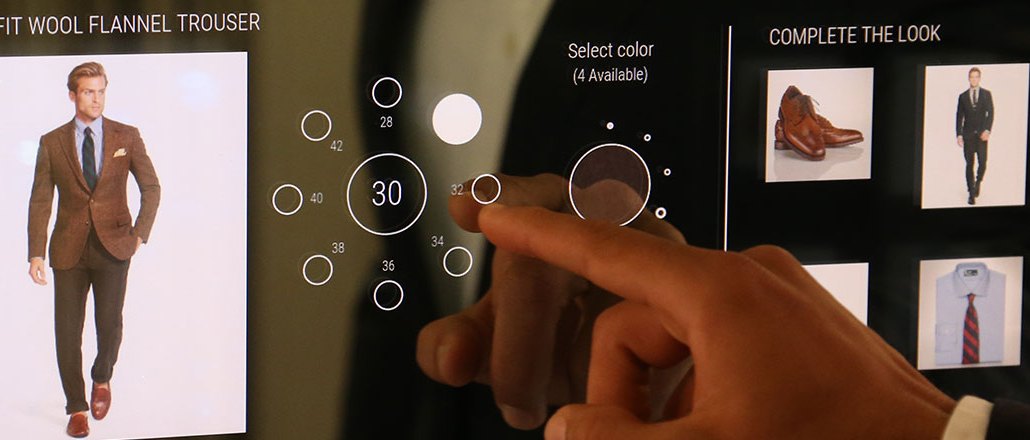

This is an installment of a four-part editorial series exploring the changes to the retail landscape by emerging technologies. It was made possible through the sponsorship of Adobe.
Ralph Lauren’s Fifth Avenue flagship store in Manhattan is home to connected fitting rooms that merge digital technology with in-store retail, meant to both remove friction from the customer experience and help the retailer make smarter merchandising decisions.
Since the new smart-mirror fitting rooms were installed in November by retail technology platform Oak Labs, Ralph Lauren has seen an engagement rate of 90 percent, which the company said was higher than expected.
“The interactive fitting rooms help Polo connect, emotionally and digitally, with consumers,” according to the company, “and technology and human touch are equal elements of Polo.”
Oak Lab’s fitting room mirrors use RFID technology to recognize the items a customer has brought in with them, rendering the products on the screen. The mirrors show other available sizes and colors for each item, as well as recommended products based on what you’ve brought in. A “call an associate” button connects to a salesperson’s tablet on the floor to call them to the fitting room. Other features like different lighting settings and language options help flesh out the brand experience.
See the fitting rooms in action in the video below.
Digital and Physical Integration: Luxury Retail’s Holy Grail, a recent report done on 61 luxury stores in New York City by Contact Lab and Exane BNP Paribas, found Ralph Lauren to be the retailer most successfully incorporating technology in stores. It was the only company surveyed that had implemented smart fitting rooms.
“Consumers are outpacing the ability of retail,” said Oak Labs CEO Healey Cypher. “They expect everything to be faster and easier, but when they step into the store, things haven’t actually changed that much.”
Cypher said that Oak Labs’ goal is to provide technology that fits into an overall in-store brand experience that’s enhanced by digital. Before launching Oak Labs, Cypher helped launch Rebecca Minkoff’s connected stores as eBay’s head of retail innovation. The eBay team provided the technology for both the fitting rooms as well as a smart mirror on the sales floor that welcomes customers with the designer’s current look book. The company’s CEO Uri Minkoff credits the technology for tripling the brand’s expected in-store clothing sales.
“It’s a misconception that online collects data better than physical retail,” said Cypher. “When you can collect data from the physical world, that’s impactful.”
Cypher said that Oak Labs’ mirrors let retailers know data points like conversion rate per item, time spent in fitting room and conversion rate per fitting room visit.
“We know which items are being tried on but not purchased,” said Cypher. “I can tell Ralph Lauren, here’s a jacket that goes into the fitting room frequently but has less conversion than other jackets. The merch team should look at this — maybe the fit isn’t right but the aesthetic is. Data like that can fundamentally change how retailers run their business.”
At Ralph Lauren, employees are using the fitting rooms’ RFID technology internally to make it easier to find items and check stock numbers, since the mirrors pull up not only what the items are but where they’re located in the store and warehouse and how many of each item is available.
Overhauling store fitting rooms is an undertaking for big companies looking to scale this technology. Rebecca Minkoff has four stores in the U.S., making it easy to update each. Ralph Lauren, on the other hand, has 171 retail stores, as well as 242 factory stores. The company is already investing in more, however: It added the Oak Labs fitting room technology to a second location in Dallas in March.
More in Marketing

Zero-click search is changing how small brands show up online — and spend
To appease the AI powers that be, brands are prioritizing things like blogs, brand content and landing pages.

More creators, less money: Creator economy expansion leaves mid-tier creators behind
As brands get pickier and budgets tighten, mid-tier creators are finding fewer deals in the booming influencer economy.

‘Still not a top tier ad platform’: Advertisers on Linda Yaccarino’s departure as CEO of X
Linda Yaccarino — the CEO who was never really in charge.








